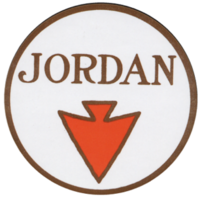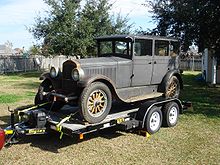
The Winton Motor Carriage Company was a pioneer United States automobile manufacturer based in Cleveland, Ohio. Winton was one of the first American companies to sell a motor car. In 1912, Winton became one of the first American manufacturers of diesel engines.

Packard or Packard Motor Car Company was an American luxury automobile company located in Detroit, Michigan. The first Packard automobiles were produced in 1899, and the last Packards were built in South Bend, Indiana in 1958.

Maxwell was an American automobile manufacturer which ran from about 1904 to 1925. The present-day successor to the Maxwell company was Chrysler, now Stellantis North America, which acquired the company in 1925.
The Pierce-Arrow Motor Car Company was an American motor vehicle manufacturer based in Buffalo, New York, which was active from 1901 to 1938. Although best known for its expensive luxury cars, Pierce-Arrow also manufactured commercial trucks, fire trucks, boats, camp trailers, motorcycles, and bicycles.

The Ajax was an American automobile brand manufactured by the Nash Motors Company of Kenosha, Wisconsin, in 1925 and 1926. The Ajax was produced in the newly acquired Mitchell Motors Company plant in Racine, Wisconsin. In 1926, all Ajax models were converted into Nash Light Sixes.
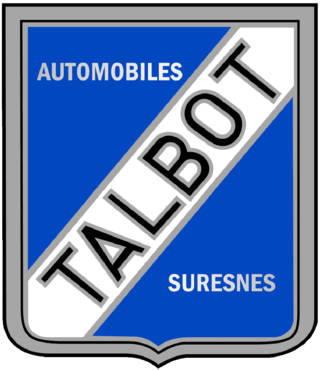
Talbot-Lago was a French automobile manufacturer based in Suresnes, Hauts de Seine, outside Paris. The company was owned and managed by Antonio Lago, an Italian engineer that acquired rights to the Talbot brand name after the demise of Darracq London's subsidiary Automobiles Talbot France in 1936.

Velie was a brass era American automobile brand produced by the Velie Motors Corporation in Moline, Illinois from 1908 to 1928. The company was founded by and named for Willard Velie, a maternal grandson of John Deere.
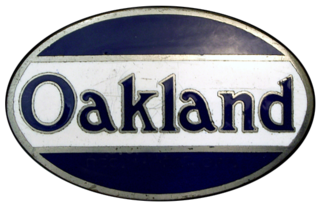
The Oakland Motor Car Company of Pontiac, Michigan, was an American automobile manufacturer and division of General Motors. Purchased by General Motors in 1909, the company continued to produce modestly priced automobiles until 1931 when the brand was dropped in favor of the division's Pontiac make.
The National Motor Vehicle Company was an American manufacturer of automobiles in Indianapolis, Indiana, between 1900 and 1924. One of its presidents, Arthur C. Newby, was also one of the investors who created the Indianapolis Motor Speedway.

Templar was a manufacturer of automobiles in Lakewood, Ohio from 1917 to 1924. The company was named for the Knights Templar and used a Maltese Cross as an emblem.

The Lexington was an automobile manufactured in Connersville, Indiana, from 1910 to 1927. From the beginning, Lexingtons, like most other Indiana-built automobiles, were assembled cars, built with components from many different suppliers. The Thoroughbred Six and Minute Man Six were popular Lexington models.

The Hudson Greater Eight is a luxury car that was produced by the Hudson Motor Car Company of Detroit, Michigan during 1931 and 1932.
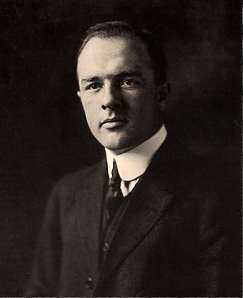
Edward S. Jordan was an American entrepreneur, automotive industrialist and pioneer in evocative advertising copy, which he wrote and used to advertise the automobiles produced by his Jordan Motor Car Company of Cleveland, Ohio. Jordan’s June 1923 advertisement for the company’s Somewhere West of Laramie is considered a breakthrough in the art of writing advertising copy.
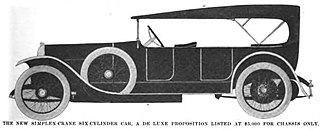
Crane-Simplex was the common name of the Simplex Crane Model 5 luxury automobile, produced by the Simplex Automobile Company in New Brunswick, New Jersey, from 1915 to 1918.

Barley Motor Car Co. was a manufacturer of luxury automobiles in Kalamazoo, Michigan, and Streator, Illinois. It manufactured the Roamer automobile (1916–29) and briefly, the Barley (1922–24), and the Pennant (1924–25).
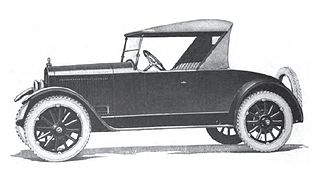
Gardner was an automobile maker based in St. Louis, Missouri between 1920 and 1931.

Scripps-Booth was a United States automobile marque based in Detroit, Michigan. Established by James Scripps Booth in 1913, Scripps-Booth Company produced motor vehicles and was later acquired by General Motors, becoming a division of it, until the brand was discontinued in 1923.

Daniels Motor Company was a pioneer brass era American automobile company, founded in 1915 by George E. Daniels with Neff E. Parish. George Daniels was a known lawyer, engineer, and mechanic. He was considered the best motorcar designer in the United States. Neff Parish had his own automobile parts and framing manufacturing company. Neff was the creator of the time's highest-grade heat-treated alloy steel frames, respected in the steel industry. Daniels Motor Company produced 1,500 high-quality automobiles between 1916 and 1924, branding themselves as “the distinguished car with just a little more power than you will ever need”, and “The aristocrat of American cars”.
The Carroll Six automobile was built by the Carroll Motorcar Company of Lorain, Ohio, from 1920 to 1922. It was commonly called the "Carroll Car."
